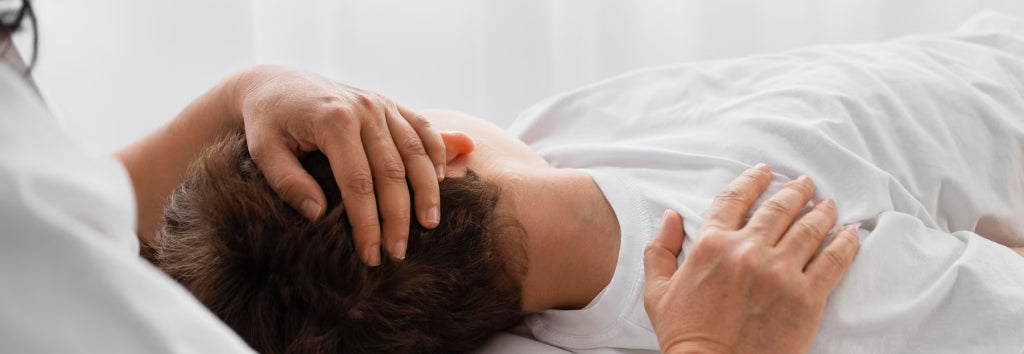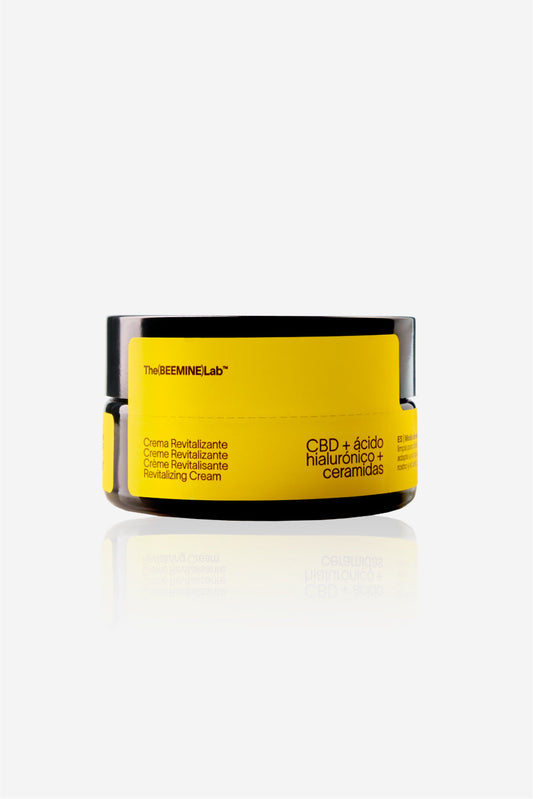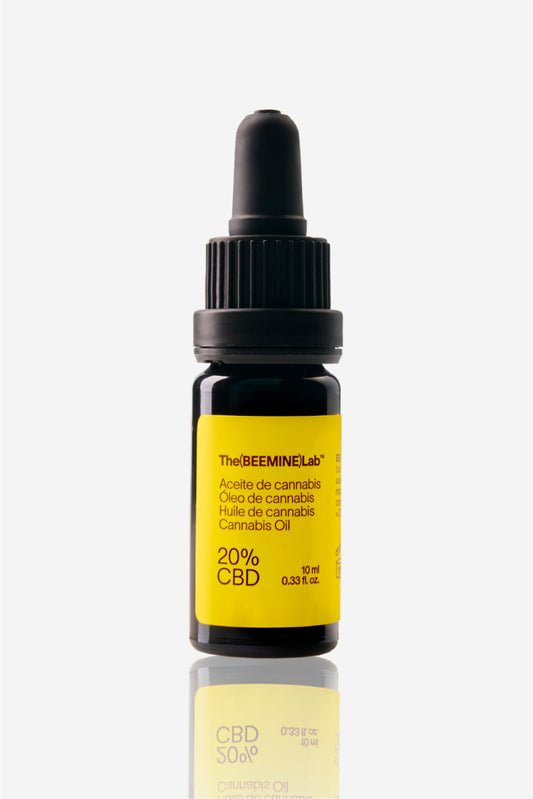What is epilepsy?
Epilepsy is a chronic disease that affects brain neurons, which present uncontrolled and improvised electrical activity that causes different types of physical and psychological consequences, affecting the quality of daily life in a variable way depending on the severity of the disorder. It affects around 50 million people worldwide (400,000 in Spain) and around 5 million cases are diagnosed each year (20,000 in Spain), with the majority appearing before the age of 20 or after the age of 65, tripling the risk of premature death. The frequency of epileptic seizures can vary greatly, from one a year to several during the same day. Epileptic seizures usually last a few minutes and can affect a specific area of the brain (partial seizures) or spread across the entire brain surface (generalized seizures), causing 4 types of convulsions:- Absence episodes : the mildest but generalized type, the person becomes absent, without response to stimuli and without being conscious, although he or she can make automatic repetitive movements without having the memory afterwards.
- Tonic seizures or crises : characterized by rigidity and partial or generalized muscle contractions, affecting consciousness depending on the area involved.
- Seizures or clonic seizures : characterized by partial or generalized muscle jerks and spasms, with varying degrees of impairment of consciousness.
- Tonic-clonic seizures or crises: the most serious and generalized, characterized by an initial tonic phase followed by muscle jerks, loss of consciousness, frequently loss of sphincter control and tongue biting.
Epilepsy symptoms, diagnosis and consequences
The disease is diagnosed by the presence of two or more unprovoked seizures , in addition to a careful neurological examination that can record the abnormal electrical pattern and the brain focus where the discharges begin. Some people experience an aura just before having an epileptic attack: a set of sensory sensations (smells, colours, abnormal sounds), psychological sensations (deja-vu, fear) and physical sensations (tingling, nausea) specific to each person, which warn that a seizure is about to begin. Some consequences that arise from these attacks are: Physical problems:- Fractures and hematomas resulting from trauma and falls resulting from loss of consciousness
- Muscle pain
- Headaches
- Death caused by the crisis itself (rarely), by trauma resulting from loss of consciousness or by the environment in which it occurs
- Mental confusion
- Alterations in cognitive functions (attention, memory, executive functions)
- Mood disorders, such as anxiety and depression, resulting from the presence of the disease itself and/or from social stigma and discrimination. (In ancient times it was considered a “possession of the devil” and until the 1970s in the United States and the United Kingdom people with epilepsy could have restricted access to public places and jobs and/or be prohibited from marrying, as is still the case today in China and India)
Causes and treatment for epilepsy
The causes are unknown (idiopathic) in 50-70% of cases, while the rest may be caused by underlying diseases of a structural, genetic, infectious, metabolic or immunological nature. The most frequent are: brain injuries, genetic malformations, strokes, infections or brain tumors . There are some crises (reflex epilepsy) that are facilitated by repetitive sensory stimuli such as lights or sounds (for example some video games), while epileptic attacks caused by factors such as lack of sleep, high fevers, stress or substance abuse are not considered Epilepsy , since they do not originate from a neurological brain problem. Children Children may suffer from epileptic seizures caused by a feverish state and by brain development itself, and may develop Dravet Syndrome or Lennox-Gastaut Syndrome, two pathologies that cause frequent clonic or tonic-clonic epileptic seizures from early childhood, which can severely limit psychomotor development and may be resistant to pharmacological treatment. With appropriate drug treatment , 70% of people can live without having seizures, and its withdrawal can be considered after two years without seizures depending on the case. In some cases it is necessary to use a combination of different medications. In the case of no response to drugs (drug-resistant epilepsy) it is possible to resort to surgery depending on the origin of the brain focus or by implanting a vagus nerve stimulator (VNS)Does CBD help epilepsy?
The antiepileptic effect of CBD has been demonstrated in pre-clinical in vivo studies (with animals) in different experimental models There is a large amount of scientific information from studies and surveys on real cases (especially in children with Dravet Syndrome or Lennox-Gastaut Syndrome), the results of which show a high capacity to reduce and even eliminate the number of epileptic attacks. The first clinical trial conducted in children with Dravet Syndrome has shown type 1 evidence for the use of CBD as an adjuvant to pharmacological treatments.Epilepsy and the endocannabinoid system
A reduction in Anandamide levels and CB1 receptor activity has been recorded in people suffering from epilepsy. The antiepileptic effects of THC appear to be due to the stimulation of CB1 receptors , while CBD acts by modulating different mechanisms related to epilepsy , in addition to helping to indirectly increase Anandamide levels and consequently increase the activity of CB1 receptors . According to studies, the antiepileptic effect of CBD could also be due to the modulation of GPR55 receptors, the stimulation of TRPV and 5-HT receptors and the inhibition of adenosine transport.Clinical efficacy of CBD for the treatment of epilepsy
CBD could be of great help in dealing with epilepsy and its consequences due to its different properties:- Antiepileptic and anticonvulsant effect: helps reduce seizures both in frequency and intensity
- Neuroprotective and antioxidant effect: helps reduce damage and neuronal wear caused by epilepsy, improving cognitive problems
- Anxiolytic and antidepressant effect: helps improve mood and the psychological and emotional consequences due to the disease itself and social discrimination
- Anti-inflammatory and analgesic effect: helps improve physical problems resulting from epileptic seizures

How many drops of CBD are recommended for epilepsy?
In various clinical studies in humans, a minimum dosage of 2-5 mg/kg/day has been used, increasing to about 25-50 mg/kg/day depending on the appearance of the effects , although in studies on children with Dravet Syndrome or Lennox-Gastaut Syndrome, lower amounts have been used. There are also many studies with more standardized dosages, from 200 mg to 300 mg per day. In general, for internal use (not regulated in the EU) it is recommended to use a medium-high concentration oil (10%-20%) , starting with minimal doses and gradually increasing until reaching the most suitable effect. It is essential to be able to carry out an advisory and follow-up consultation with specialized health professionals , considering that CBD is used as an adjuvant to pharmacological treatment and interactions with medications may be observed (especially Clobazam and Valproate).Precautions and possible adverse effects
CBD is a very safe substance even when used in large quantities, however, care must be taken when taking medications or if you suffer from heart or blood pressure problems. For this reason, in these cases it is always advisable to contact a health professional. Adverse effects are usually mild to moderate in intensity and may include tiredness, drowsiness, dry mouth, dizziness and decreased appetite.Literature
- https://www.who.int/es/news-room/fact-sheets/detail/epilepsy
- https://www.clinicbarcelona.org/asistencia/enfermedades/epilepsia/signos-y-sintomas
- https://vivirconepilepsia.es/que-es-la-epilepsia
- https://medlineplus.gov/spanish/ency/article/000694.htm
- https://www.msdmanuals.com/es/professional/trastornos-neurol%C3%B3gicos/trastornos-convulsivos/trastornos-convulsivos
- https://dravetfoundation.eu/sobre-dravet/
- https://medlineplus.gov/genetics/condition/lennox-gastaut-syndrome/#inheritance
- Perucca E. (2017). Cannabinoids in the Treatment of Epilepsy: Hard Evidence at Last?. Journal of epilepsy research , 7 (2), 61–76. https://doi.org/10.14581/jer.17012
- O'Connell, B.K., Gloss, D., & Devinsky, O. (2017). Cannabinoids in treatment-resistant epilepsy: A review. Epilepsy & behavior : E&B , 70 (Pt B), 341–348. https://linkinghub.elsevier.com/retrieve/pii/S1525505016306254
- Billakota, S., Devinsky, O., & Marsh, E. (2019). Cannabinoid therapy in epilepsy. Current opinion in neurology , 32 (2), 220–226. https://doi.org/10.1097/WCO.0000000000000660
- Silvestro, S., Mammana, S., Cavalli, E., Bramanti, P., & Mazzon, E. (2019). Use of Cannabidiol in the Treatment of Epilepsy: Efficacy and Safety in Clinical Trials. Molecules (Basel, Switzerland) , 24 (8), 1459. https://doi.org/10.3390/molecules24081459
- Gray, R.A., & Whalley, B.J. (2020). The proposed mechanisms of action of CBD in epilepsy. Epileptic disorders: international epilepsy journal with videotape , 22 (S1), 10–15. https://doi.org/10.1684/epd.2020.1135
- Gaston, T.E., & Szaflarski, J.P. (2018). Cannabis for the Treatment of Epilepsy: an Update. Current neurology and neuroscience reports , 18 (11), 73. https://doi.org/10.1007/s11910-018-0882-y
- Huntsman, R.J., Tang-Wai, R., & Shackelford, A.E. (2020). Cannabis for Pediatric Epilepsy. Journal of clinical neurophysiology: official publication of the American Electroencephalographic Society , 37 (1), 2–8. https://doi.org/10.1097/WNP.0000000000000641
- Zaheer, S., Kumar, D., Khan, M.T., Giyanwani, P.R., & Kiran, F. (2018). Epilepsy and Cannabis: A Literature Review. Cureus , 10 (9), e3278. https://doi.org/10.7759/cureus.3278







